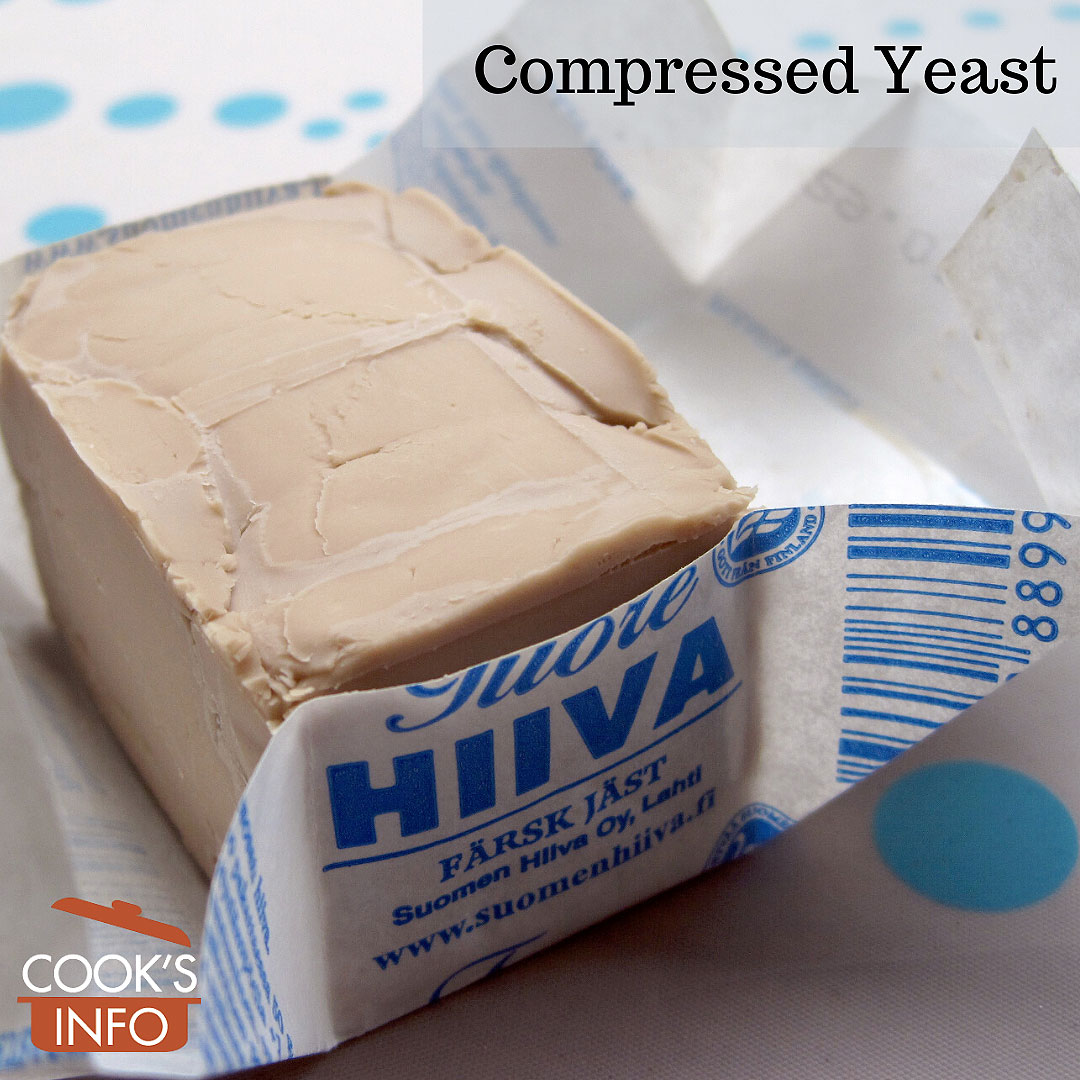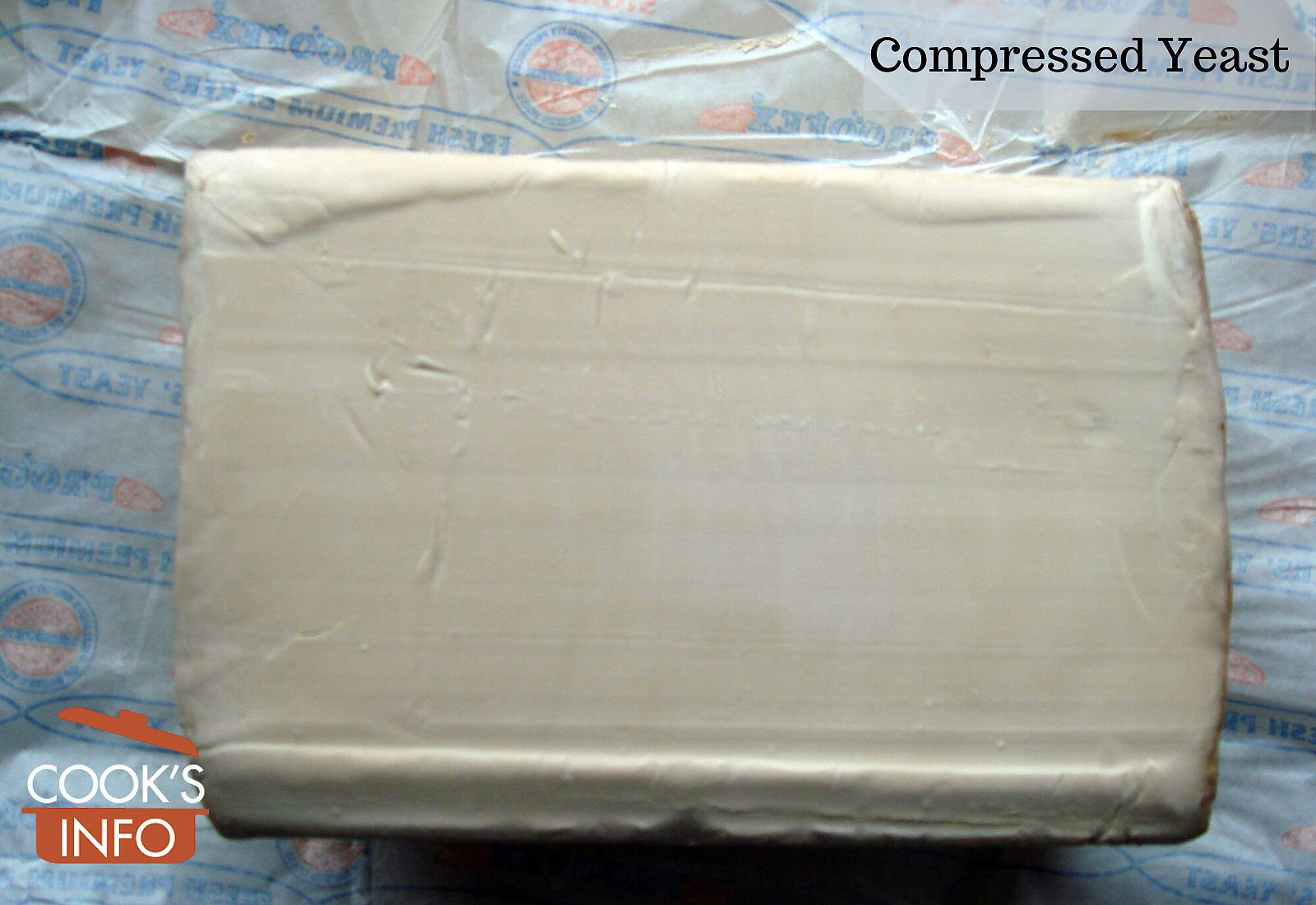
Compressed yeast. Hellahulla / wikimedia / 2007 / CC BY-SA 3.0
Compressed yeast is fresh yeast compressed into very small blocks.
It is made from cream yeast, from which a good deal of the water is drained off by centrifugal force.
It is moist (about 70% moisture), crumbly and creamy-white.
Each consumer-size block (aka cake) weighs about 0.6 of an ounce (17 g.) For commercial use, it is also sold in larger blocks, weighing 1 pound (450 g), 2 pounds (900 g) or 5 pounds (2 ¼ kg) each.
Sometimes, stores are not good about clearing it out of their chiller cabinets when it is past its best-before date. So when buying, don’t just toss it in the cart. Look for a date, and if there isn’t one, either put it down and look for an alternative, or when you get home, proof it before you use it.
It is used by large commercial operations, because it is more economical than the more-processed dry yeast. Large commercial operations also have access to reliable sources for it, and will have the turn-over in using it to keep their stock fresh.
Cooking Tips
Generally, use about 1 cake of compressed yeast per 3 cups (1 pound / 450 g) of flour.
Equivalents
Equal in rising power to package active dry yeast (2 ¼ teaspoons – 3 teaspoons, depending on size of dry granules)
1 ½ to 1.8 pounds of cream yeast = 1 pound (450 g) of compressed yeast = 6 to 8 oz of active dry yeast = 5 to 6 ½ ounces of instant yeast.
To convert compressed yeast measures to measures for active dry yeast, multiply x .4 (Rose Levy Beranbaum, in her Bread Bible book, says multiply by .32)
Storage Hints
Must be stored in refrigerator. Will often have an expiry date on it but if not, use within two weeks of purchase at most. Discard if it goes brown, slimy or smells sour.
Can be frozen for up to 3 months. Freeze in small portions that you will use. To use, defrost at room temperature (not in microwave), and use what you have thawed within 24 hours.
History Notes
This was the only form of yeast commercially available to “modern” housewives until dry yeast was invented in the 1930s.

Compressed yeast. ElinorD / wikimedia / 2007 / CC BY-SA 3.0

